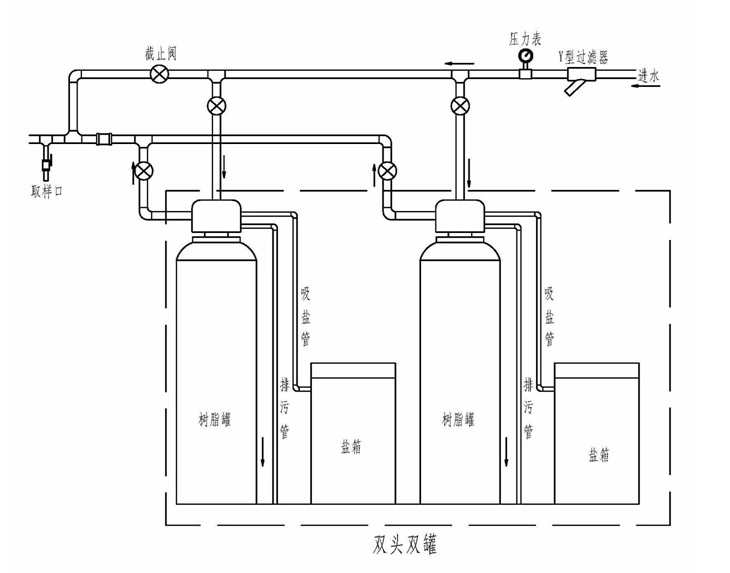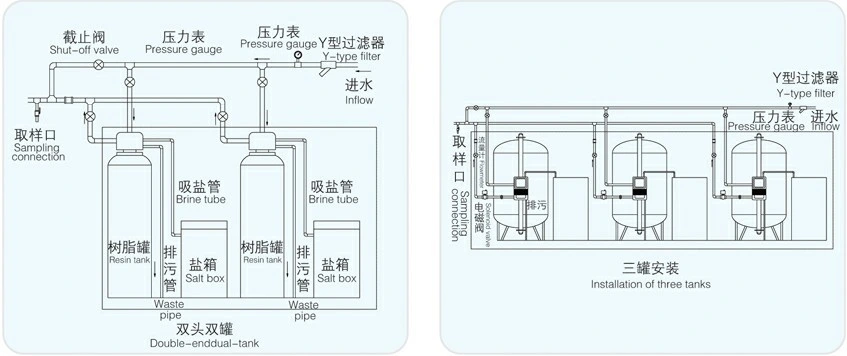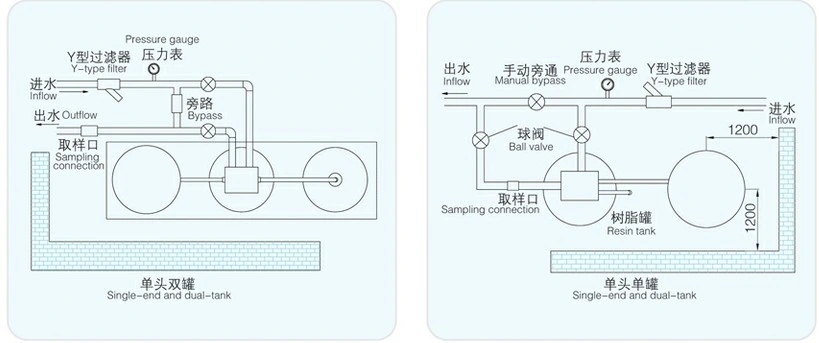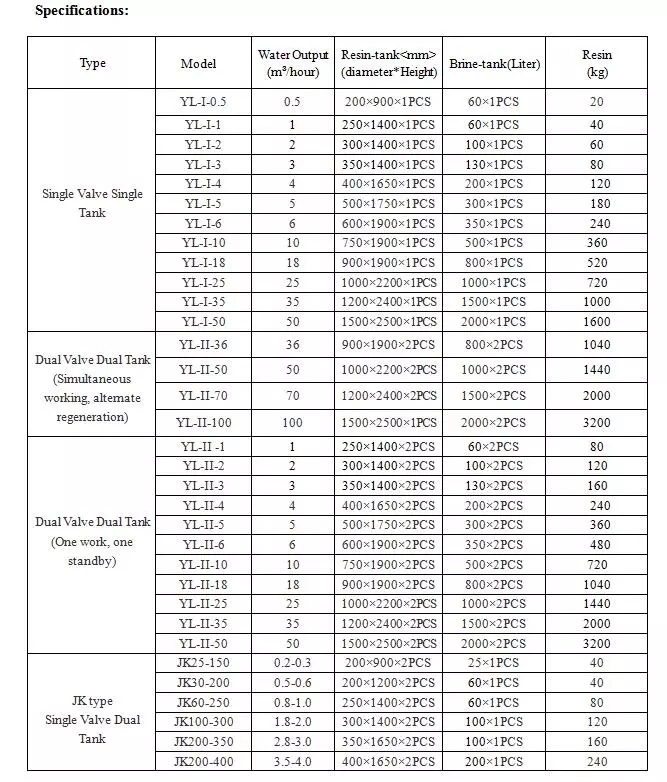Introduction
Ion exchange units that replace calcium and magnesium ions from water are known as water softeners. They may also remove varying amounts of other inorganic pollutants such as metals, but they will not remove organic chemicals, pathogens, particles, or radon gas. Water softener units work most efficiently with particulate-free water.

What is a Water Softener system ?
The ion exchange water softener is one of the most common tools of water treatment. Its function is to remove scale-forming calcium and magnesium ions from hard water. In many cases soluble iron (ferrous) can also be removed with softeners. A standard water softener has four major components: a resin tank, resin, a brine tank and a valve or controller.
The softener resin tank contains the treated ion exchange resin - small beads of polystyrene. The resin beads initially adsorb sodium ions during regeneration. The resin has a greater affinity for multi-valent ions such as calcium and magnesium than it does for sodium. Thus, when the hard water containing the Calcium and Magnesium Ions is passed through the resin bed, the calcium and magnesium ions adhere to the resin, releasing the sodium ions until equilibrium is reached. The water softener has exchanged its sodium ions for the calcium and magnesium ions in the water.


How does water softener work?(Principles of Ion Exchange to Soften Water )
Calcium and magnesium ions are atoms having a positive electrical charge, as do sodium and potassium ions. Ions of the same charge can be exchanged. In the ion exchange process, a granular substance (usually a resin) that is coated with sodium or potassium ions comes into contact with water containing calcium and magnesium ions. Two positively charged sodium or potassium ions are exchanged (released into the water) for every calcium or magnesium ion that is held by the resin. This "exchange or trade" happens because sodium or potassium are loosely held by the resin. In this way, calcium and magnesium ions responsible for hardness are removed from the water, held by the resin, and replaced by sodium or potassium ions in the water. This process makes water "soft." Eventually, a point is reached when very few sodium or potassium ions remain on the resin, thus no more calcium or magnesium ions can be removed from the incoming water. The resin at this point is said to be "exhausted" or "spent," and must be "recharged" or "regenerated."
The Brine Tank
The brine tank is just what its name suggests, a plastic tank that contains a brine, water saturated with salt. The brine solution is typically made with salt or sodium. However problems may result if you are on a restricted low sodium diet in that some of the sodium is transmitted into the drinking water.
Also, the bacteria in septic systems so necessary for the breakdown of waste may be adversely affected by high concentrations of sodium.
The Control Valve and Regeneration
The control valve is the traffic cop in your water softener system. It determines when it is time to clean those plastic beads which are now coated with calcium and magnesium. Older style units use a timer, newer models use a computer controlled meter that determines when it is time based on actual water usage.
To clean the beads the water softener uses a process often called regeneration which consists of three cycles: Backwash, Recharge and Rinse.
Let's take a review of each cycle
Backwash:
Regeneration starts with a backwash cycle where the valve reverses water flow in the tank and flushes the tank of debris. The debris is then eliminated out the drain.
Recharge or Regeneration:
In the Recharge cycle the salty brine solution is pumped into the mineral tank. The highly concentrated salt solution with its positive electrical charge is attracted to the negatively charged plastic beads and forces the magnesium and calcium off the beads.
The salt or potassium by itself is not positively charged enough to displace the magnesium or calcium in normal concentrations, but in the highly concentrated solution of brine, it is strong enough to force the calcium and magnesium off.
The excess magnesium and calcium rich salty water is then flushed out of the tank and down the drain.
Specification
Contact information:
Official website:yldwater.en.made-in-china.com
Guarantee period:1 year